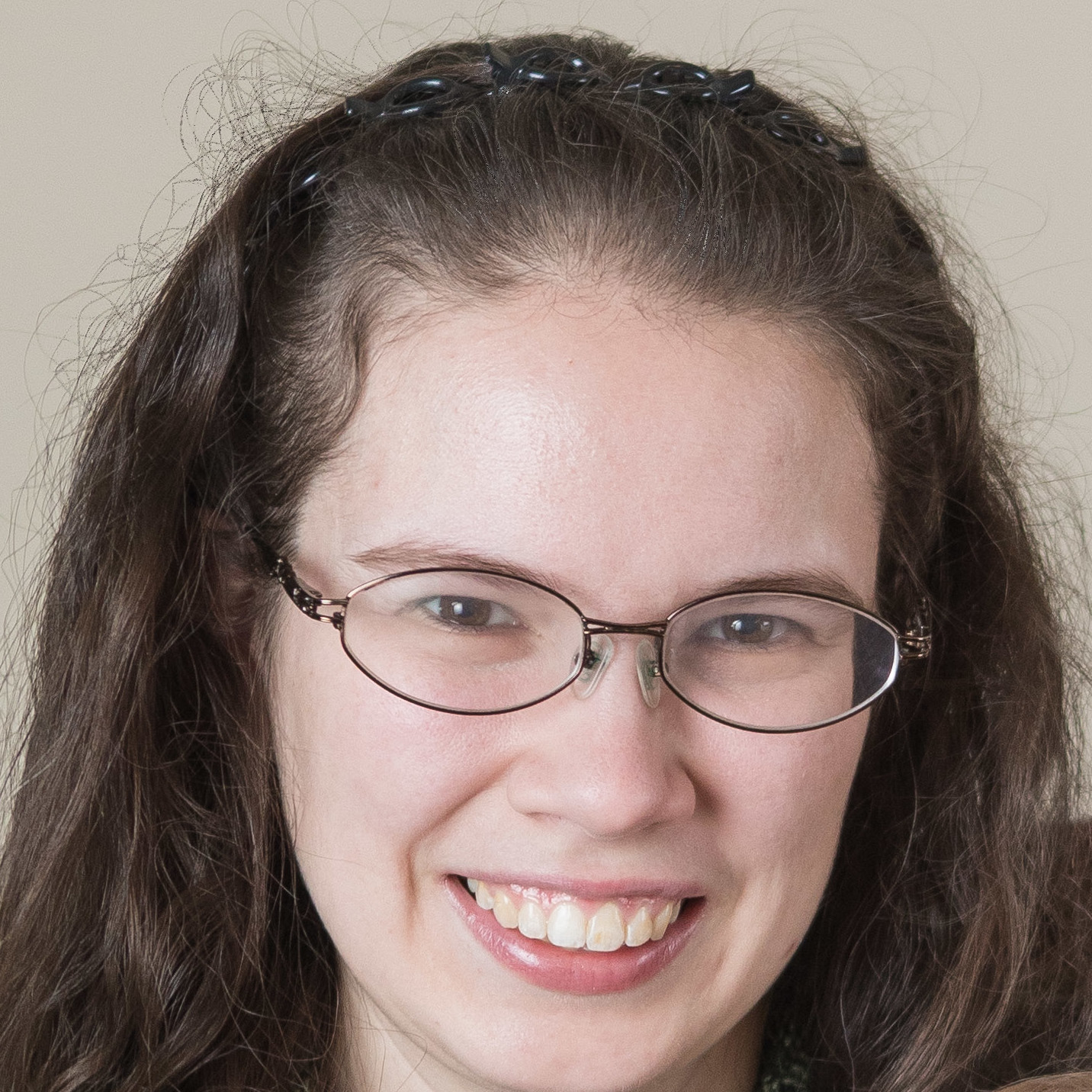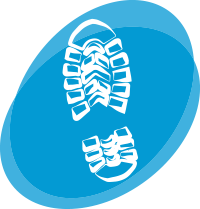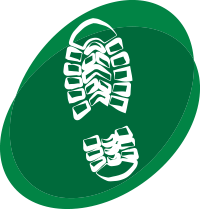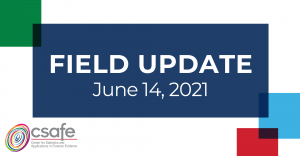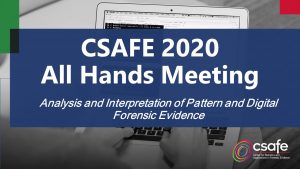Overarching GOALS
Developing new methods for assessing the strength of association between a crime scene print and a suspect’s shoe remains a priority for CSAFE researchers. Projects focus on gathering and analyzing information to create a score-based likelihood ratio framework for footwear examination. During the initial funding period, CSAFE teams at ISU, CMU and UCI advanced these efforts. Footwear research continues with CSAFE 2.0, led by researchers at ISU, UCI and WVU.
Looking for
WEBINARS,
Short courses, presentations or publications
on Footwear Impression Analysis?
Additional Team Members
Soyoung Park sypark@iastate.edu
Richard Stone rstone@iastate.edu
Steve Lund (NIST) steven.lund@nist.gov
Martin Herman (NIST) martin.herman@nist.gov
focus Areas
It is believed that randomly acquired characteristics (RACs) are among the most discriminating features of shoeprints. Existing models to understand the spatial distribution of RACs rely on simplifying assumptions. One goal of our research is to develop and validate models that are more realistic for RACS. This project will also study the persistence of RACs over time (as the shoe is worn) and the repeatability and reproducibility of RAC detection by examiners.
Footwear comparison is conducted by experts in two broad stages. First, general properties such as the pattern, size and wear of the shoe sole are compared to the crime scene impression. If these do not fit, then the analysis is stopped and the pair is classified as a non-match. If the general properties fit, the forensic expert looks for randomly acquired characteristics (RACs) on the shoe sole and determines if they match RACs on the trace from the crime scene. Some CSAFE researchers are considering novel image-based approaches to footwear evidence. This project is focused on providing support for existing footwear analysis approaches through further study of RACs.
There is limited data available about the occurrence and persistence of RACs. This includes questions associated with whether RACs can be reliably annotated, whether RACs persist over time as the shoe is worn, and the relationship between RACs on a shoe and RACs found in crime scene impressions. Data from a recent study in Israel in which shoes were worn by individuals over the course of a year and repeated impressions were taken can be used to study these issues. Several individuals marked impressions made at different points in time by the same shoe. These data also include several instances of an individual marking the same impression at two points in time. The individuals in question were students trained by professional examiners. Though not themselves examiners we believe this unique data set is critical for developing approaches to analyzing the reproducibility (different examiner) and repeatability (same examiner) of RACs.
The goal of this project is to develop statistical and computational models to aid the interpretation of impression evidence left by shoe outsoles. We are developing statistical models that support robust reasoning about partial or obscured impression evidence and computational implementations of these models that can perform matching and retrieval for category-level (brand, size) identification from partial prints.
The goal of this project is to develop statistical and computational models to aid the interpretation of impression evidence left by shoe outsoles. Interpreting impression evidence requires reasoning about whether class-level and acquired characteristics of a candidate source are likely to have produced a given impression relative to other potential sources. We propose to develop statistical models that support robust reasoning about partial or obscured impression evidence and computational implementations of these models that can perform matching and retrieval for category-level (brand, size) identification from partial prints. Existing research in this area, including our own, has focused on matching test impressions with crime-scene evidence but has largely ignored forensic practice, which typically involves examination of the candidate source shoe itself and matching of physical features of the tread to evidence. To address this in a quantitative experimental framework, we propose to utilize high-resolution 3D scans of treads and develop methods that match features of these models to impression evidence and make predictions about the impressions a given tread might leave.
Footwear analysis is currently limited by the absence of reliable, publicly available databases that characterize the distribution of footwear characteristics and patterns. One approach to addressing this limitation is through the development of an instrument that can be deployed in public areas to passively collect images of outsoles of shoes. These data can enable estimation of the frequency of footwear patterns in a given region and thereby facilitate the transition to a likelihood ratio or Bayes Factor approach to the evaluation of footwear evidence. This is a novel project with the potential to have a large impact.
One of the biggest obstacles to development of quantitative and probabilistic methods for footwear impression evidence is that gathering data on the reference population or populations is incredibly difficult – the footwear used changes as new shoes are released, but also due to weather, geography, and other factors. This obstacle grows more complex when we consider the correct reference population: Should statistics be computed based on the general population, or based on a more difficult to measure population of “criminals”?
Project FWIII addresses these problems, leveraging a scanning device currently under development through an NIJ grant to acquire data from distinct geographic populations. We will develop relationships with local law enforcement in Iowa and Nebraska, eventually partnering with interested organizations to collect footwear data from populations which interact with law enforcement; during the same time period, we will collect data from public locations in the same region, facilitating comparison of the two reference populations. The collected data and associated metadata will be made available to the public in an online database which will serve as a resource for researchers and practitioners.
During the data collection period, we will manually annotate the collected images, identifying different class characteristics which may be of interest to examiners and researchers. These annotated images will be used to train more accurate feature recognition models, increasing the ability to automatically identify features in new images. Annotated images will also be made publicly available, serving as a resource for additional machine learning research in footwear class characteristics.
We will also work to characterize the main components of variability in class characteristic frequency from among options such as weather, time of day, weekday, population, and location. Leveraging this information, we will develop sampling guidelines to assist practitioners and other researchers who wish to collect data in their own geographic area.
The primary long-term goal of this project is to empower practitioners to collect footwear frequency data in their own jurisdictions, and to provide the hardware and software tools to support the use of the collected data in forensic applications. By providing open-access databases, we facilitate the development of additional tools for analyzing this type of data at the same time as we improve our own software and build up the body of literature relating to class characteristic frequency variation.
Researchers at ISU have developed and carried out limited testing of an algorithm called MC-COMP to quantify the similarity between two outsole impressions with the same class characteristics (Park and Carriquiry, 2020). The algorithm has a small error rate in identifying same/different source pairs (4%-5%); however, more testing on degraded images is needed. In addition, with our new partners at West Virginia University, we will use data from the application of this algorithm to identify features of shoeprint images that are associated with more difficult cases, with the goal of developing a quality metric for footwear images. This can enable automatic identification of image quality that can help interpret footwear evidence.
Footwear impressions are commonly found in crime scenes, but until now footwear examiners have lacked the tools to objectively quantify the similarity between a crime scene impression to one or more test impressions. The task is challenging because crime scene impressions are often smudged or otherwise degraded. The ISU team has developed an algorithm called MC-COMP that produces a similarity score between two 2D outsole impressions that shows good performance (~96% accuracy) even when one of the images is degraded in a certain way. While promising, the algorithm has only been used on two shoe models and only on images degraded in the lab.
Two-dimensional images consist of thousands of pixels, each with a certain gray intensity (in gray scale images). MC-COMP uses a subset of interesting pixels selected using SURF (speeded-up robust features). To align two images, MC-COMP relies on the geometric arrangement of the selected pixels in local regions of the outsole that the examiner selects. In this light, the algorithm we proposed is semi-automated and requires input by the examiner. We note that MC-COMP is a “whole outsole” method in that pixels of interest can correspond to the pattern of the outsole or to RACs (randomly acquired characteristics).
We propose to pursue the following research objectives:
- Continue improving MC-COMP. Now, the similarity score is produced by a random forest that combines three features. We propose to explore the use of additional features and the possibility of stacking, by using the scores themselves as features in a different learning algorithm.
- Greatly expand the type of outsoles on which we apply MC-COMP. In particular, in collaboration with footwear examiners, NIST and the FBI, create a large database of realistic crime scene impressions with known ground truth to validate the algorithm and ensure that it will perform well in real casework.
- Explore the use of high-resolution instruments to collect both crime scene and test impressions.
- Assess the relationship between footwear impression quality and automated image comparison methods by developing a footwear image quality model based on independent image features/factors. Resulting image quality predictors will be regressed against algorithm performance (match rank and ground truth) and expert predictions of quality in order to develop an independent quality model that can be used to inform weight of evidence estimates.
- In collaboration with practitioners, explore the steps needed to transition the new technologies to laboratories for use in real casework.
Knowledge Transfer
Found 36 Results
Page 1 of 2
Page 1 of 2
Page 1 of 2
Shoeprint Alignment and Comparison using Maximum Cliques
Type: Presentation Slides Research Area(s): Footwear,Forensic Statistics
Published: 2023 | By: Gautham Venkatasubramanian
This presentation is from the 107th International Association for Identification (IAI) Annual Educational Conference, National Harbor, Maryland, August 20-26, 2023. Posted with permission of CSAFE.
An algorithm for source identification of footwear impressions—its application on pristine shoeprints and crime-scene like shoeprints
Type: Presentation Slides Research Area(s): Footwear,Forensic Statistics
Published: 2023 | By: Hana Lee
This presentation is from the 107th International Association for Identification (IAI) Annual Educational Conference, National Harbor, Maryland, August 20-26, 2023. Posted with permission of CSAFE.
CSAFE Project Update & ASCLD FRC Collaboration
Type: Presentation Slides Research Area(s): Digital,Firearms and Toolmarks,Footwear,Forensic Statistics,Handwriting,Implementation and Practice
Published: 2022 | By: Jeff Salyards
This presentation highlighted CSAFE's collaboration with the ASCLD FRC Collaboration Hub.
Source identification of shoeprints in mock crime scene using an algorithm based on automatic alignment
Type: Presentation Slides Research Area(s): Footwear,Forensic Statistics
Published: 2023 | By: Hana Lee
This presentation is from the 75th Anniversary Conference of the American Academy of Forensic Sciences, Orlando, Florida, February 13-18, 2023. Posted with permission of CSAFE
Creating a Forensic Database of Shoeprints from Online Shoe-Tread Photos
Type: Publication Research Area(s): Footwear
Published: 2023 | By: Samia Shafique
Shoe-tread impressions are one of the most common types of evidence left at crime scenes. However, the utility of such evidence is limited by the lack of databases of footwear prints that cover the large and growing number of distinct…
A Comparison of Various Score-Based Likelihood Ratio (SLR) Methods for the Quantitative Assessment of Footwear Evidence
Type: Presentation Slides Research Area(s): Footwear,Forensic Statistics
Published: 2023 | By: Valerie Han
This presentation is from the 75th Anniversary Conference of the American Academy of Forensic Sciences, Orlando, Florida, February 13-18, 2023. Posted with permission of CSAFE.
A New Algorithm for Source Identification of Look-alike Footwear Impressions Based on Automatic Alignment
Type: Presentation Slides Research Area(s): Footwear
Published: 2022 | By: Hana Lee
Presentation at the International Association for Identification
Center for Statistics and Application in Forensic Evidence Update
Type: Publication Research Area(s): Footwear,Forensic Statistics,Handwriting
Published: 2022 | By: Alicia Carriquiry
The information below highlights a sample of current research initiatives led by the CSAFE team. Additional accomplishments in other forensic science disciplines will be discussed in subsequent issues of Forensic Science Review. Visit the CSAFE website www.forensicstats.org to learn more…
Automatic Class Characteristic Recognition in Shoe Tread Images
Type: Presentation Slides Research Area(s): Footwear
Published: 2022 | By: Jayden Stack
One of the fundamental problems in footwear forensics is that the distribution of class characteristics in the local population is not currently knowable. Surveillance devices for gathering this data are just half of the battle -- it is also necessary…
Modeling And iNventory of Tread Impression System (MANTIS): The development, deployment and application of an active footwear data collection system
Type: Webinar Research Area(s): Footwear,Forensic Statistics,Implementation and Practice
This CSAFE webinar was held on March 24, 2022. Presenters: Dr. Richard Stone Iowa State University Dr. Susan Vanderplas University of Nebraska, Lincoln Presentation Description: This webinar details the development, capabilities and successful deployment of the Modeling And iNventory of…
Evaluating the Reliability of Randomly Acquired Characteristics (RACs) Identification in Footwear Impression Evidence
Type: Presentation Slides Research Area(s): Footwear
Published: 2021 | By: Corey Katz
Presented at American Association of Forensic Sciences (AAFS) 2021
Footwear Research in CSAFE
Type: Presentation Slides Research Area(s): Footwear
Published: 2021 | By: Alicia Carriquiry
This presentation provided an overview of CSAFE's footwear research and was presented at IAI in 2021
The effect of image descriptors on the performance of classifiers of footwear outsole image pairs
Type: Publication Research Area(s): Footwear
Published: 2022 | By: Soyoung Park
Shoe prints are commonly found at the scene of a crime and can sometimes help link a suspect to the scene. Because prints tend to be partially observed or smudgy, comparing crime scene prints with reference images from a putative…
CSAFE 2021 Field Update
Type: Presentation Slides,Webinar Research Area(s): Bloodstain,Digital,Firearms and Toolmarks,Footwear,Forensic Statistics,Handwriting,Implementation and Practice,Latent Print,Training and Education
The 2021 Field Update was held June 14, 2021, and served as the closing to the first year of CSAFE 2.0. CSAFE brought together researchers, forensic science partners and interested community members to highlight the organization’s achievements, identify areas for…
Assessing Footwear Examiner Performance
Type: Webinar Research Area(s): Footwear
This CSAFE webinar was held on May 13, 2021. Presenter: Corey Katz Graduate Researcher, University of California, Irvine Presentation Description: There has recently been increased attention on the reliability and validity of methods used in the analysis of forensic evidence.…
Open Forensic Science in R
Type: Publication Research Area(s): Footwear
Published: 2019 | By: Samantha Tyner
This book is for anyone looking to do forensic science analysis in a data-driven and open way. Whether you are a student, teacher, or scientist, this book is for you. We take the latest research, primarily from the Center for Statistics and…
Quantifying the similarity of 2D images using edge pixels: An application to the forensic comparison of footwear impressions
Type: Publication Research Area(s): Footwear
Published: 2020 | By: Soyoung Park
We propose a novel method to quantify the similarity between an impression (Q) from an unknown source and a test impression (K) from a known source. Using the property of geometrical congruence in the impressions, the degree of correspondence is…
Quantifying the similarity of 2D images using edge pixels: An application to the forensic comparison of footwear impressions
Type: Publication Research Area(s): Footwear
Published: 2020 | By: Soyoung Park
We propose a novel method to quantify the similarity between an impression (Q) from an unknown source and a test impression (K) from a known source. Using the property of geometrical congruence in the impressions, the degree of correspondence is…
A database of two-dimensional images of footwear outsole impressions
Type: Publication Research Area(s): Footwear
Published: 2020 | By: Soyoung Park
Footwear outsole images were obtained from 150 pairs of used shoes. The motivation for constructing the database was to enable a statistical analysis of two-dimensional (2D) images of shoe outsoles, to understand within shoe (between replicate images of the same…
CSAFE 2020 All Hands Meeting
Type: Webinar Research Area(s): Bloodstain,Digital,Firearms and Toolmarks,Footwear,Forensic Statistics,Handwriting,Implementation and Practice,Latent Print,Training and Education
The 2020 All Hands Meeting was held May 12 and 13, 2020 and served as the closing to the last 5 years of CSAFE research and focused on kicking off new initiatives for the next phase of the center, CSAFE…
Page 1 of 2
COMMUNITY CALL-TO-ACTION
Want to collaborate with CSAFE on a project? Contact us to share your idea.




